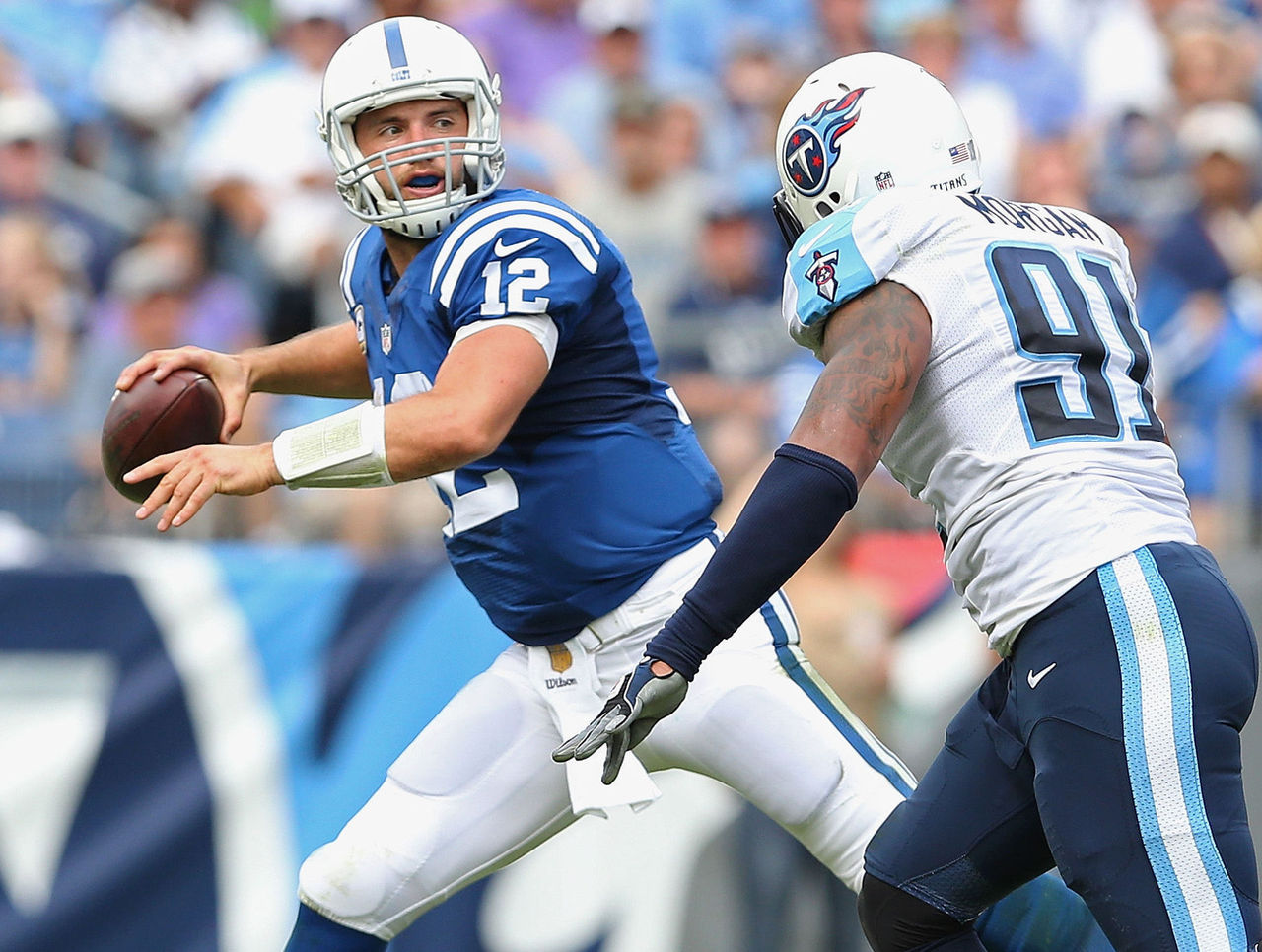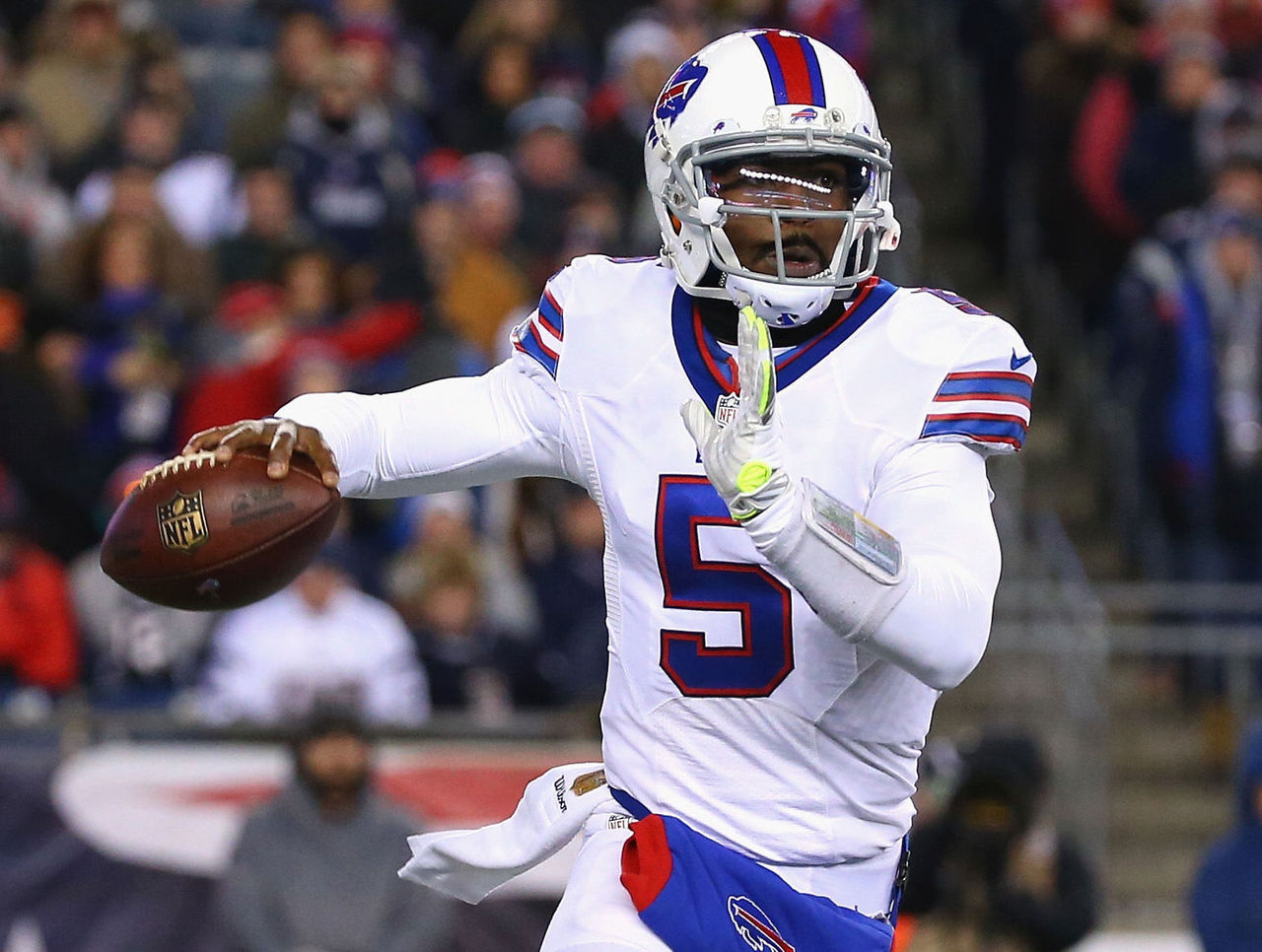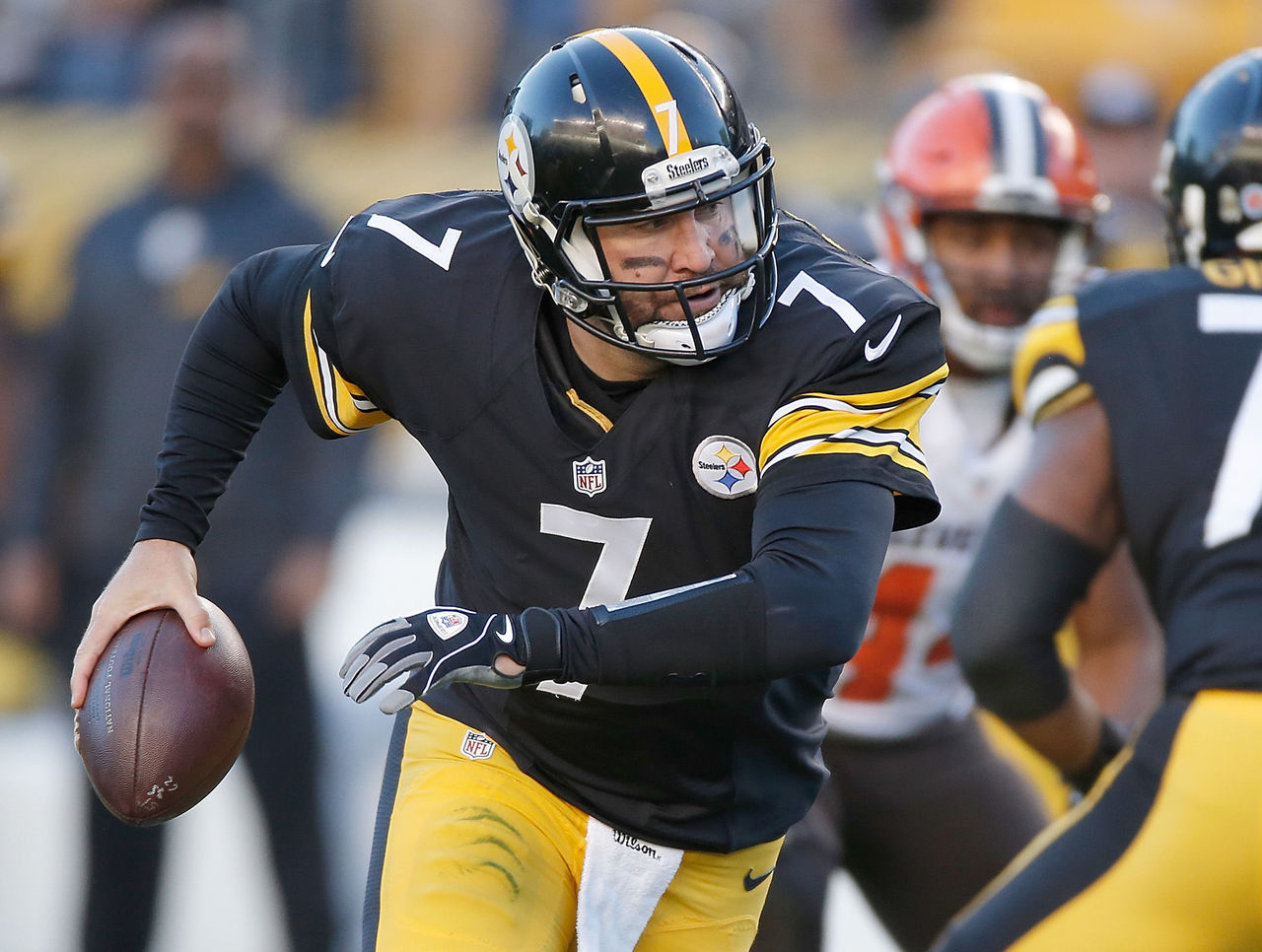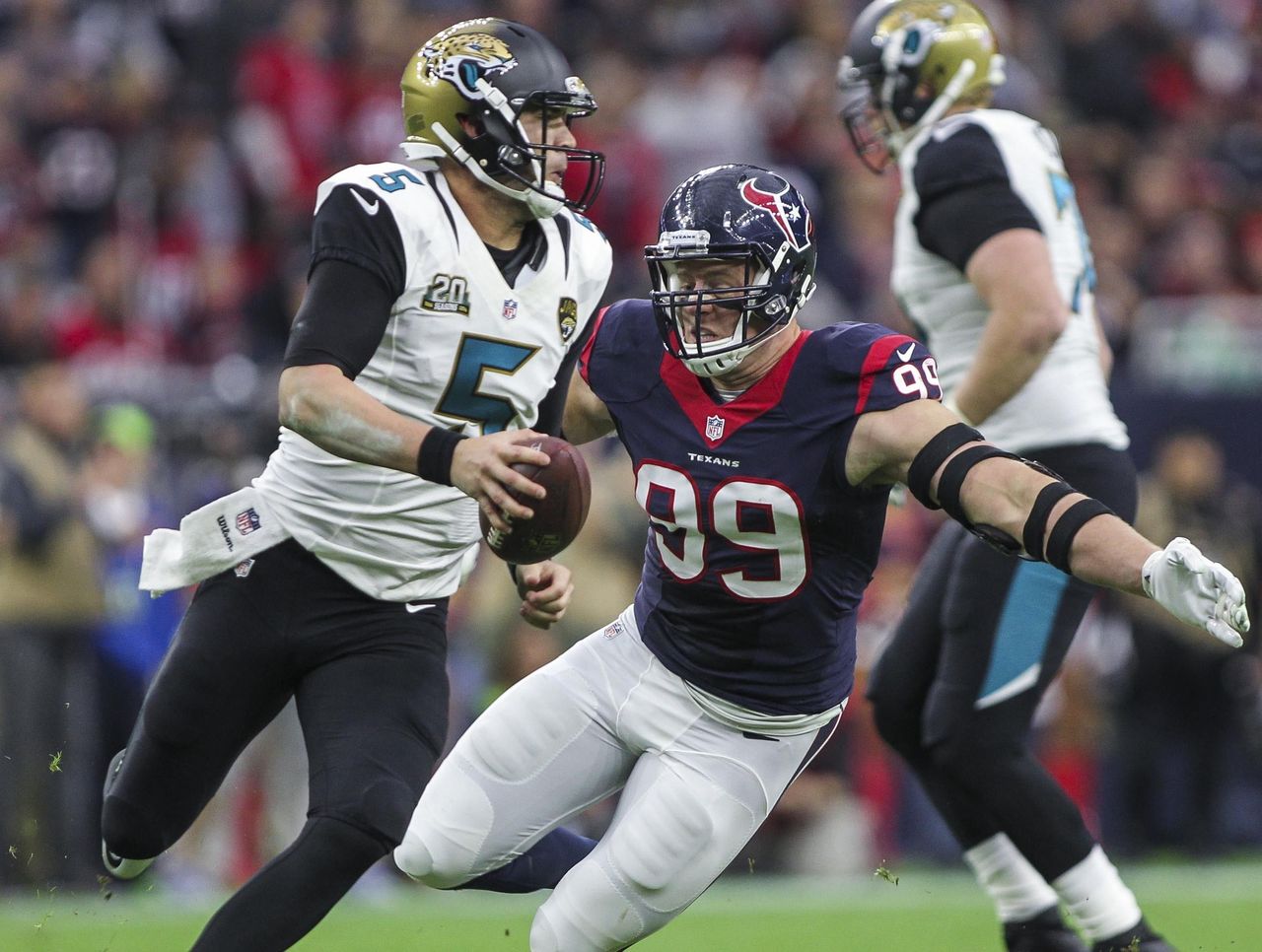QBs facing the potential of interception regression
Interceptions play a big part in how a quarterback's fantasy value unfolds over a season. Not only do picks often come with a point penalty, but they also cut drives short - erasing opportunities to rack up additional passing yardage and vie for the ultimate point booster: touchdowns.
That said, interception totals are largely a result of luck more than anything. Most starting QBs can be penciled in for somewhere in the range of 10-to-15 INTs in a given season.
So instead of looking at the volume of picks thrown, we will look at other indicators - particularly the percentage of passes resulting in INTs. We'll try to predict which QBs are due for regression back toward career numbers - both over-performers and under-performers - to help you decide which QBs to drop down your queue, and who could be in line for a bounce-back year.

Andrew Luck, Indianapolis Colts
Luck did a lot of damage in his seven appearances in 2015. Though he ranked 12th among all QBs with 12 INTs thrown, his INT% was a ghastly 4.1 percent, second only to the mummified corpse of the now-retired Peyton Manning.
Despite his struggles, Luck is in good position for a triumphant return to top-QB status after a year in purgatory. Prior to 2015, the Colts' pivot had never thrown more than 2.9 percent of his passes for interceptions in a season, and that previous high watermark for ineptitude came way back in his rookie season. His average INT% from 2012 to 2014 was just 2.4 percent.
The Colts also spent a first-round pick on interior pocket protector C Ryan Kelly. They selected three other offensive lineman in the draft, so keeping Luck on his feet (and out of the doctor's office) is clearly a priority.
Fewer rushed passes will mean fewer turnovers, which will extend drives. It's reasonable to expect 4,500-plus yards passing with the upside for 40 TDs, a return to his 2014 season stats.

Andy Dalton, Cincinnati Bengals
Dalton seems destined to take a big step back after an uncharacteristically poised year in the pocket. He had just seven picks in 2015 after throwing at least 16 in each of his previous three seasons.
From his rookie season in 2011 to 2014, his INT% climbed from 2.5 to 3.0 to 3.4 to 3.5 percent; just 1.8 percent of Dalton's pass attempts ended up in the hands of the defense in 2015.
Perhaps it's a sign of maturity from a player hitting his prime. Other markers of effectiveness - completion percentage, yards per attempt, TD% - have improved as well. More likely, however, is that Dalton experienced a good dose of luck. It wouldn't be surprising to see him slip back towards his career interception rates in 2016.
The public is appropriately pessimistic about Dalton's 2016 outlook. He's still only being taken as the 15th QB on average, per FantasyFootballCalculator. For now, that seems like an appropriate place to take the Bengals' QB, as another 16-pick season could be just around the corner.

Tyrod Taylor, Buffalo Bills
Taylor had perhaps the best season of all starting QBs when it came to protecting the ball. He threw just six INTs - a minuscule 1.6 percent of his 380 pass attempts.
The Bills' QB isn't a typical pocket passer. Those 380 pass attempts ranked just 24th in the league, behind some QBs that appeared in fewer games, such as Dalton and Joe Flacco (and the next man on this list). So while Taylor's interception rate was impressively low, he also wasn't putting the ball in a position where it could be picked off.
But the types of throws that sometimes lead to INTs are also conducive to big offensive plays. Twenty-nine QBs had more yardage per game and 30 had a longer completed pass. The Bills allowed Taylor to play within his physical limitations, but the conservative approach caps his overall fantasy potential.
With a year under his belt, the team may attempt to increase the focus on Taylor's arm within the offense. You can't help but feel that there will be diminishing returns the more Taylor is allowed to air the ball out. Expect slightly more yardage from him but with a dramatic bump in INTs, which could actually lead to diminished scoring across the offense.

Ben Roethlisberger, Pittsburgh Steelers
Big Ben had an off-year, throwing 16 picks in just 12 games (11 starts). His 3.4 INT% was his worst in any season since 2008. In fact, from 2009 to 2014, Roethlisberger threw picks on just 2.0 percent of his 3,049 pass attempts. That's incredibly effective for a QB with a bit of a reputation for free-wheeling under pressure in the pocket.
There may be a couple of reasons why 2015 may have been particularly bad in the turnover department for Roethlisberger. For one, the Steelers only got six games out of Le'Veon Bell, who caught an incredible 128 passes out of the backfield in his first two NFL seasons.
DeAngelo Williams didn't provide the same safety valve option. Fifteen of Big Ben's INTs came when Bell was out with injury (three came after Bell left at halftime with a season-ending injury in Pittsburgh's eighth game).
There's a razor-thin margin for error. Even though the math says that Big Ben's INT% should be closer to 2.0 percent than 3.4, he could struggle once again without Bell for a quarter of the season, not to mention a season-long suspension for WR2 Martavis Bryant.
Taking Roethlisberger before the seventh round is buying high on a QB with a number of obstacles in his path that could continue to cap his potential for elite fantasy production.

Blake Bortles, Jacksonville Jaguars
Finally, there's Bortles, who is being drafted as the ninth QB off the board. Bortles finished in standard formats as the fourth-best QB in football, ahead of former MVPs Aaron Rodgers and Drew Brees - and he did so despite ending 18 drives prematurely with his league-leading interception total.
With just two years of pro experience, the Jaguars' pivot hasn't exactly built a steady baseline to regress back to, but his development from Year 1 to Year 2 indicates a QB moving in the right direction.
He threw 131 more passes as a second-year QB, matching his completion percentage from his rookie season (58.6 percent). He threw for nearly 70 more yards per game and improved his TD% from 2.3 percent to a fantastic 5.8 percent. And he did so while only throwing one more pick than the year prior. Adjusting for the increased pass attempts, his INT% fell from 3.6 to 3.0.
His 4,428 yards passing and 35 TDs seem like a sign of things to come in 2016. The young receiving tandem of Allen Robinson and Allen Hurns is coming into its own, and Bortles can better make use of TE Julius Thomas.
With another year of experience, expect his decision-making to improve; even throwing just four INTs fewer than last year could lead to another 150-plus yards passing and the potential for more touchdowns. Marginal improvements to his game could cement his status as a top-five QB for years to come.
HEADLINES
- Texans top Chargers to earn playoff spot, hand AFC West title to Broncos
- Team USA's Hutson stretchered off after taking puck to neck
- Hage's OT goal helps Canada narrowly avoid upset vs. Latvia
- Giannis starts vs. Bulls after 8-game absence
- Wemby returns to starting lineup vs. Jazz, Fox out with hip injury